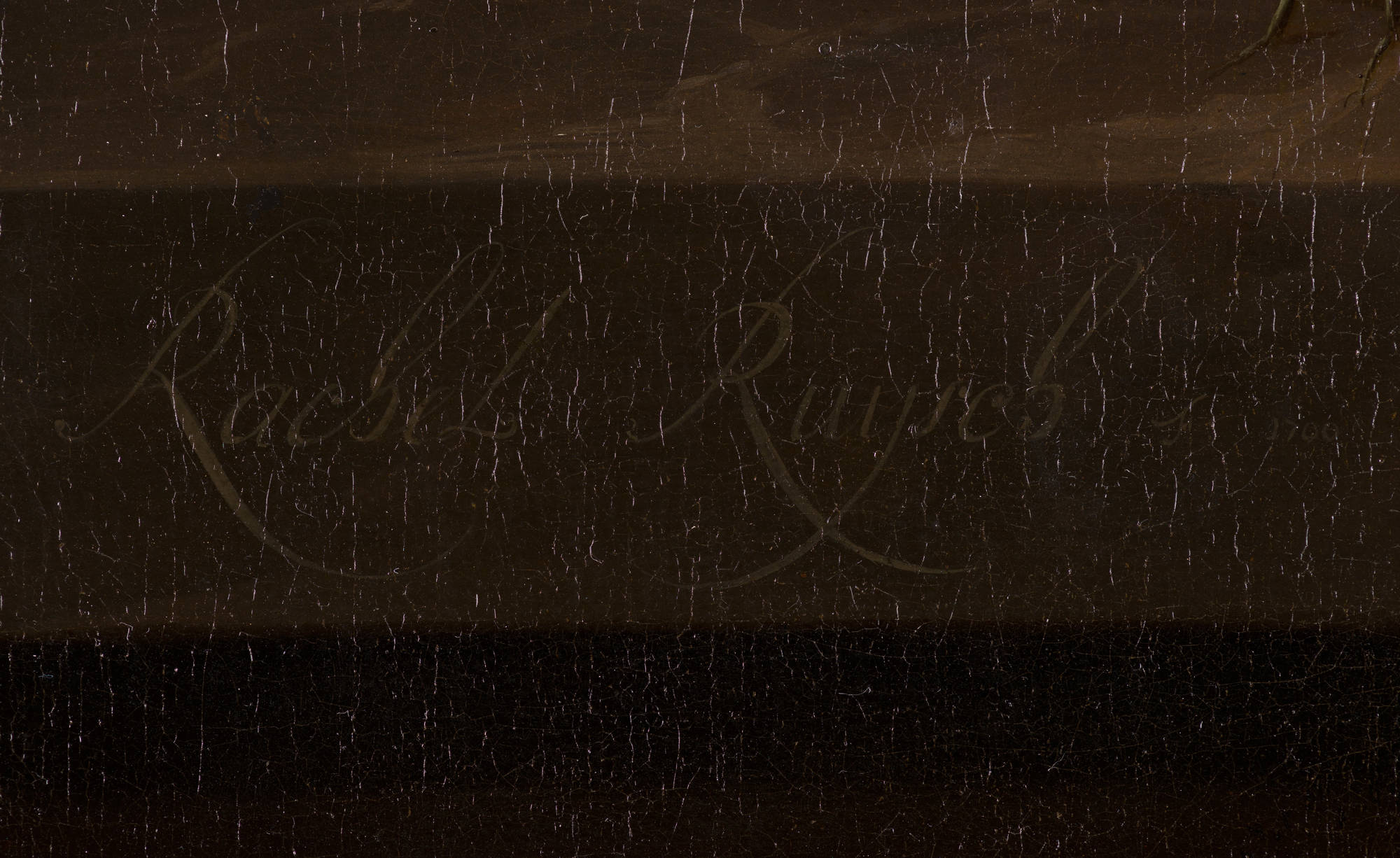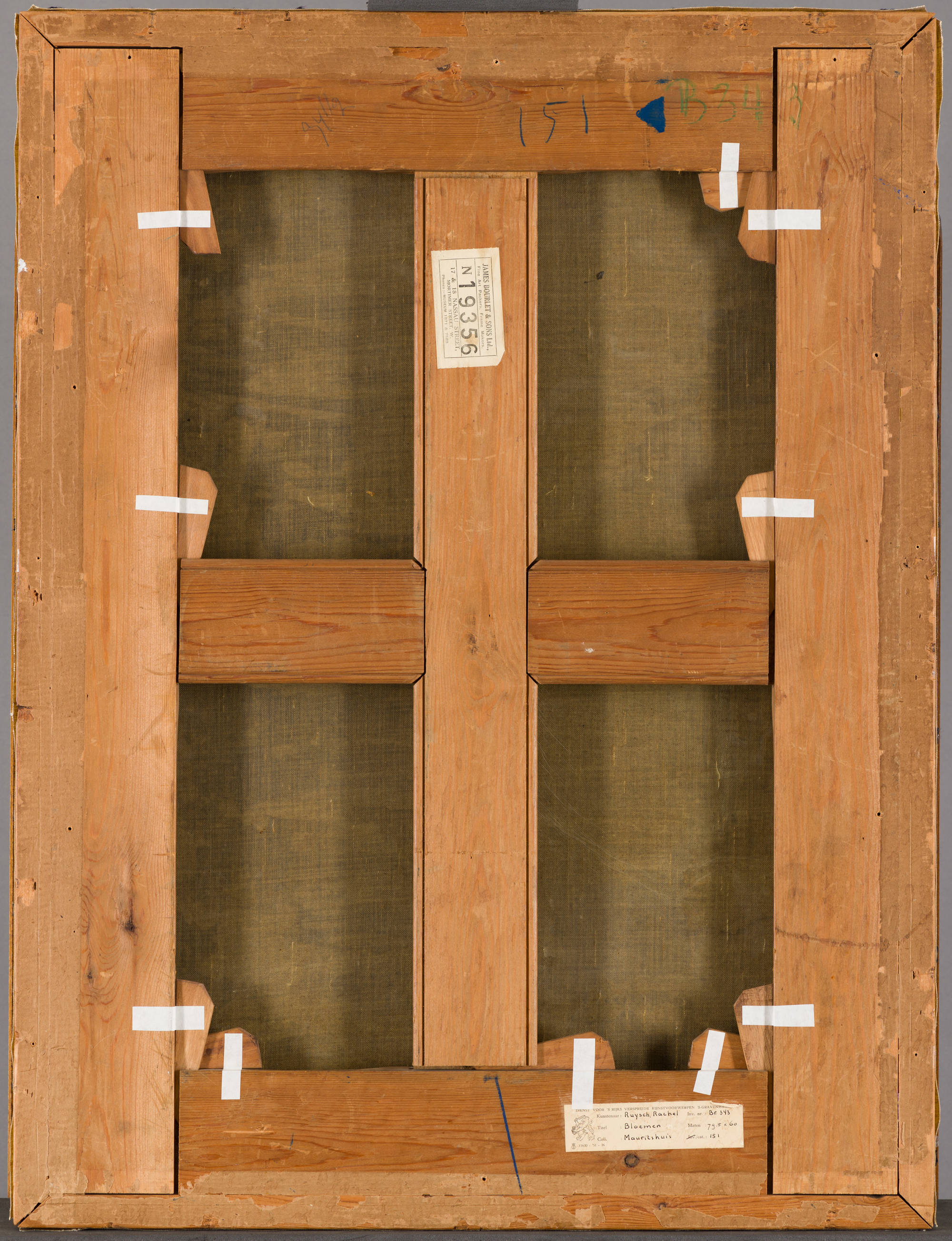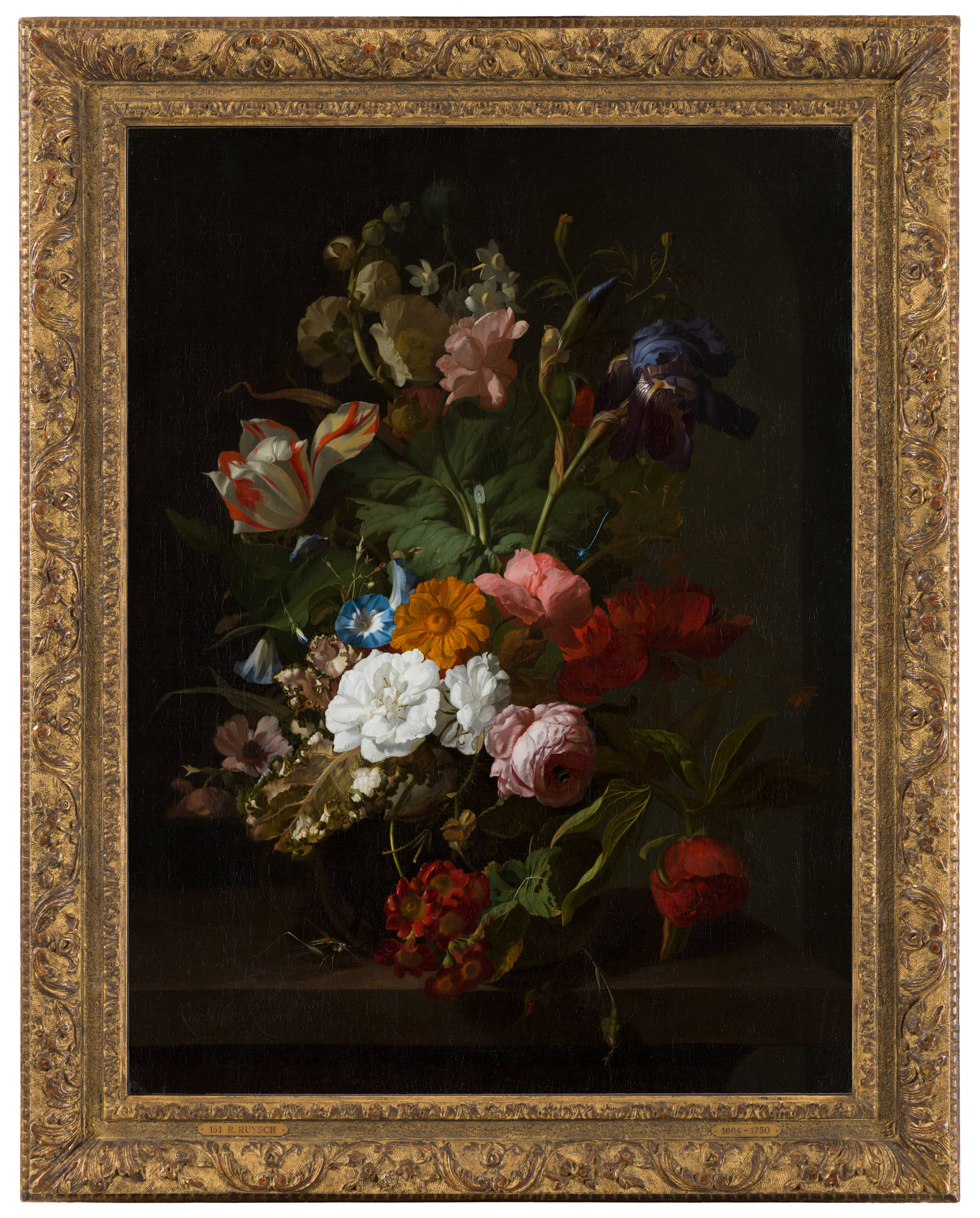This painting by Rachel Ruysch is one of the few flower pieces representing a bouquet clearly past its peak. The blue iris at the upper right hangs over, withered, the tulip at the left is about to lose its first petal, and an overblown flower has even been removed from the middle. This would appear to have been just done for the stem is still ‘bleeding’: the drops fall onto the large leaves, from which they slowly glide down. It was probably a large red opium poppy, notorious for its short life span.
A side effect of the conspicuous gap in the bouquet is that the flower piece has a distinctly strong sense of depth. The white roses and the calendula at the bottom are brightly illuminated, while above the light is suddenly much less intense so that the flowers in partial shade seem to recede. No matter how atypical the wilted state of the bouquet, with its ingenious composition and superb suggestion of light and texture, this painting is characteristic for Ruysch and demonstrates the high quality of her work.
Not surprisingly, Ruysch was a phenomenon in her time. The fact that as a woman she possessed such remarkable skills was cause for wonderment, all the more so because in addition to producing many dozens of paintings, Ruysch also bore ten children, each and every one of whom she had raised herself, as she noted with pride. Moreover, she continued working to a ripe old age and was still painting at 84, two years before her death. This only fuelled the admiration she aroused among her contemporaries.
Ruysch learned to paint from Willem van Aelst, who began training her when she was fifteen. In addition, she must also have been influenced by her father, the famous Amsterdam professor of anatomy and botany, Frederik Ruysch. He owned an extensive collection of curiosities, was an amateur painter, and as of 1685 headed the Amsterdam Hortus Botanicus as a professor in botany. With such a father it would have been difficult for Rachel Ruysch to have specialised in any other subject.
(this is a reworked version of a text published in: E. Runia, Flowers in the Mauritshuis, The Hague 2007, pp. 62-65)








